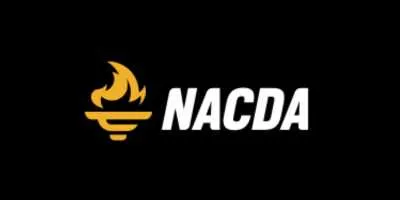Home » Weight Rooms » Guide to Equipping High School and College Weight Rooms

Weight training is a cornerstone of athletic development for both high school and college athletes. Properly equipping a weight room is crucial as it can greatly enhance athletes’ performance, prevent injuries, and promote overall fitness. However, the requirements and limitations of high school and college weight rooms often vary significantly due to different levels of athletic programs, budget constraints, and available space.
This article aims to guide athletic directors in selecting essential and nice-to-have equipment for high school and college weight rooms, emphasizing the key differences and similarities. Additionally, it will address sport-specific equipment and the amenities that create a comprehensive training environment.
If you are currently planning to invest in new gym machines at your facility, try our weight room cost calculator to get a tailored cost estimate in a matter of minutes.
Tailoring Weight Room Equipment for Different Levels
When equipping weight rooms, the main differences among middle schools, high schools, and colleges lie in the scale and specialization of equipment required. Middle school weight rooms prioritize safety and basic fitness, featuring lighter weights, simple resistance machines, and basic cardio equipment to introduce students to strength training. High school weight rooms emphasize versatility and safety with essential equipment like dumbbells, barbells, and power racks, catering to a broad range of athletic abilities and ensuring ease of use for beginners.
In contrast, college weight rooms require advanced and robust equipment to meet the higher intensity and specialized training needs of collegiate athletes. This includes a wider variety of free weights, specialized bars, advanced cardio machines, and sport-specific training tools, reflecting the increased capacity, durability, and sophistication needed to support elite athletic performance and diverse sports programs.
Standards for Weight Room Equipment at Schools, Colleges, and Universities
Standards for weight rooms at schools, colleges, and universities focus on safety, accessibility, and the quality of equipment to create a safe and effective training environment for students and athletes. Key aspects include shock-absorbent flooring, adequate spacing between equipment, clear signage, and regular maintenance to ensure safety.
Equipment must be durable, varied, and ergonomic to accommodate different users. Accessibility standards require ADA compliance and inclusive equipment for individuals with disabilities. Design and layout considerations include proper ventilation, adequate lighting, and the availability of emergency equipment like first aid kits and AEDs.
Be sure to familiarize yourself with the relevant certifications and guidelines:
- NSCA (National Strength and Conditioning Association): Provides guidelines for facility design, equipment, and safety procedures.
- ASTM (American Society for Testing and Materials): Sets standards for the quality and safety of fitness equipment.
- ACSM (American College of Sports Medicine): Offers recommendations for facility management and safety practices.

Core Equipment Common to Both High Schools and Colleges
Regardless of the level, certain pieces of equipment are foundational to any weight room. These include free weights, power racks, benches, cardio machines, resistance machines, functional training tools, and safety equipment.
- Free Weights: Dumbbells, barbells, and weight plates are indispensable. Dumbbells typically range from 5 to 100 pounds in high schools and can go up to 150 pounds in colleges. Barbells and weight plates are crucial for various lifts like squats, deadlifts, and bench presses, which build core strength and muscle mass.
- Power Racks and Squat Racks: These are essential for performing heavy lifts safely. They provide adjustable bars and hooks for squats, bench presses, and other exercises that require heavy lifting.
- Benches: Both flat and adjustable benches are necessary for exercises like bench presses, dumbbell rows, and seated shoulder presses. College weight rooms might also have Olympic benches designed for competitive lifting.
- Cardio Machines: Treadmills, stationary bikes, and rowing machines are vital for cardiovascular conditioning. Colleges often include ellipticals and more advanced cardio equipment to offer a variety of cardiovascular workouts.
- Resistance Machines: Machines like leg presses, lat pulldowns, and seated rows help in targeting specific muscle groups. These machines are user-friendly and beneficial for beginners learning proper form.
- Functional Training Tools: Equipment such as kettlebells, medicine balls, and battle ropes enhance functional strength and conditioning. They support a wide range of exercises that improve overall athletic performance.
Safety Equipment: Spotting platforms and safety bars are crucial for preventing injuries during heavy lifts. This equipment ensures that athletes can train safely even when lifting alone.
Nice-to-Have Equipment for High School and College Weight Rooms
While the essentials cover the basic needs, certain additional equipment can enhance the training experience and support more advanced training.
- Advanced Cardio Machines: Ellipticals and stair climbers provide variety in cardio workouts.
- Specialty Bars: Trap bars and curl bars offer different lifting techniques and reduce strain on joints.
- Additional Functional Training Tools: Kettlebells and medicine balls add versatility to training programs.
- Cable Machines: Functional trainers and cable crossovers enable a wide range of exercises targeting different muscle groups.
- Recovery Tools: Foam rollers and stretching mats help in recovery and injury prevention.
- Technology Integration: Digital training programs and workout tracking systems enhance the training experience.
- Sound Systems: Basic sound systems improve the workout environment.

Sport-Specific Equipment in Weight Rooms
Certain sports require specialized training to meet their unique demands. Football players need explosive strength for tackling and blocking. Soccer athletes focus on leg strength and agility for powerful kicks and quick movements. Ice hockey players prioritize lateral movements and balance for better skating. Baseball players emphasize core strength and wrist stability for batting and throwing. Basketball players aim to increase vertical jump and explosive power for court performance. Each sport’s specific needs are best met with targeted equipment, ensuring effective training for optimal performance.
Football:
- Power Sleds: For pushing and pulling exercises to build explosive strength.
- Trap Bars: Used for deadlifts to reduce strain on the lower back.
- Heavy Medicine Balls: For power drills such as slams and throws.
- T-Bar Row Machines: Target back muscles crucial for tackling and blocking.
Soccer:
- Leg Press Machines: For building leg strength necessary for kicking and sprinting.
- Hip Abduction/Adduction Machines: Enhance hip stability and strength.
- Cable Machines with Ankle Attachments: For drills to strengthen hip flexors and extensors.
- Plyometric Platforms: Essential for developing explosive leg power.
Ice Hockey:
- Slide Boards: Mimic the lateral skating stride, improving lower body strength and stability.
- Leg Curl/Extension Machines: Build strength in the quadriceps and hamstrings.
- Landmine Presses: Enhance upper body and core strength.
- Balance Trainers: Improve balance and core stability.
Baseball:
- Rotational Machines: Target the core muscles used in hitting and throwing.
- Wrist Rollers: Strengthen the forearm and grip.
- Lat Pulldown Machines: Develop back and shoulder muscles.
- Medicine Balls for Rotational Throws: Improve core strength and power.
Basketball:
- Vertimax Platforms: Enhance vertical jump height and explosive power.
- Cable Machines with Basketball Attachments: Simulate shooting and passing movements.
- Heavy Ropes/Battle Ropes: Build upper body endurance and strength.
- Plyometric Boxes: For jump training.

Must-Have Amenities in Weight Rooms
Amenities play a crucial role in creating a functional and comfortable training environment. Essential features include locker rooms for athlete convenience, with basic lockers and showers in high schools and more sophisticated changing areas in colleges. Hydration is facilitated by water fountains in high schools and hydration stations in colleges. Adequate ventilation is necessary for comfort, with colleges often having advanced HVAC systems. Sufficient lighting is important for safety and performance, with colleges investing in high-quality and natural lighting sources. Safety features such as first aid kits and AEDs are mandatory to handle emergencies.
Additional amenities can enhance the overall experience and support athlete well-being. Recovery facilities like stretching areas, saunas, and cold plunge pools aid in recovery and injury prevention. Lounge areas with comfortable seating and TVs provide relaxation spaces for athletes. Nutrition options, including vending machines, nutrition bars, and smoothie stations, support athlete nutrition. Technology enhancements like high-speed Wi-Fi and touchscreen info panels improve connectivity and information access. Private training areas offer focused environments with dedicated rooms and personal training services.
Weight Room Equipment Cost Analysis and Funding Opportunities
Equipping a high school weight room typically costs between $10,000 to $80,000, while a college weight room can range from $50,000 to $400,000 or more. The cost is influenced by factors such as the quality and variety of equipment, the size of the facility, and specific training needs for different sports. High-end, specialized equipment and advanced technology integration significantly increase the budget.
Find out more in our weight room cost article.
Additionally, there are grants available from various organizations and government programs that can help offset these costs, providing financial support to schools aiming to enhance their athletic facilities.
We have written more about weight room grants in a separate guide.

Choosing The Ideal Weight Room Equipment Supplier
Choosing a knowledgeable and professional weight room equipment company is crucial for ensuring the quality, safety, and effectiveness of your facility. A reputable supplier can provide expert advice on selecting the right equipment tailored to your athletes’ needs, ensure proper installation, and offer ongoing maintenance and support. They also ensure that the equipment meets industry standards and safety regulations, reducing the risk of injuries. Furthermore, a professional supplier can provide warranties and reliable customer service, ensuring that your investment is protected and your weight room remains functional and up-to-date.
Check out our recommendations for weight room equipment companies in our separate article.
Conclusion
In summary, high school and college weight rooms share many commonalities but also have distinct differences based on the level of athletic programs and available resources. High school weight rooms focus on versatile, safe, and foundational equipment, while college weight rooms cater to advanced athletic needs with more specialized and robust equipment.
Sport-specific tools and comprehensive amenities further enhance the training experience, ensuring that athletes can train effectively and safely to achieve their best performance. Creating a well-equipped weight room tailored to the needs of the athletes is crucial for fostering athletic development and success.











